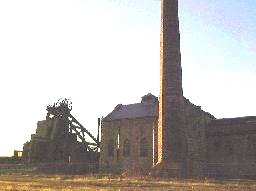



|
Shirebrook on the Map Mining and your view's |
|
It is My Intention to use these Pages to put your views forward. |
 "Excerpt from"
"Excerpt from"
Hi! my name is Bill Riley.
 I used to work in the coal mines. I started work in 1958 at Bates Colliery in Blyth, Northumberland.
I used to work in the coal mines. I started work in 1958 at Bates Colliery in Blyth, Northumberland.I also worked at West Cannock 5's, in Staffordshire, and at Shirebrook Colliery, in Derbyshire. I was made redundant in 1993 when Shirebrook was closed as part of the Government pit closure policy. In years to come kids may be asking their parents, what were pits? what were miners?, along with other searching questions. The history books will outline the main features of mining, but may not capture the more down to earth aspects of working below ground. |
 One of my earliest memories happened on the day I was going
underground for the very first time. There was a group of us (mining trainees)
One of my earliest memories happened on the day I was going
underground for the very first time. There was a group of us (mining trainees)waiting at the shaft side of Bedlington Station pit ( this was a working pit, but also a training pit for all the pits in the area), the Banksman made sure we had been searched for contraband, cigarettes, matches etc. which were not allowed underground in case they caused an explosion. He then allowed us to enter the cage which would lower us to the training gallery. The cage was suspended on one long piece of wire rope. I can't remember how many were on the cage, but there was a mixture of trainees and experienced miners. All the trainees were extremely nervous wondering what it was going to be like, would the cage drop quickly? how safe was it?  would the cage be stopped in time before it reached the bottom?
etc.
would the cage be stopped in time before it reached the bottom?
etc.The older colliers knew we were worried and they were smiling knowingly to each other. We heard the Banksman ring the signal for the winder to lower the cage. This was it, no turning back now, butterflies were in our stomachs, |
Pleasley Pit
|
|
What next? With perfect timing we heard a rich deep voice saying
"it's twenty years to the day since the rope last broke"
and the old colliers roared with laughter as the cage dropped swiftly into the darkness. I learned quickly that miners had a queer sense of humour. They worked in dangerous conditions and used humour to ease their fears. |
Read More of Bill's Story here
|
Have you got a Story to tell |

       
|

